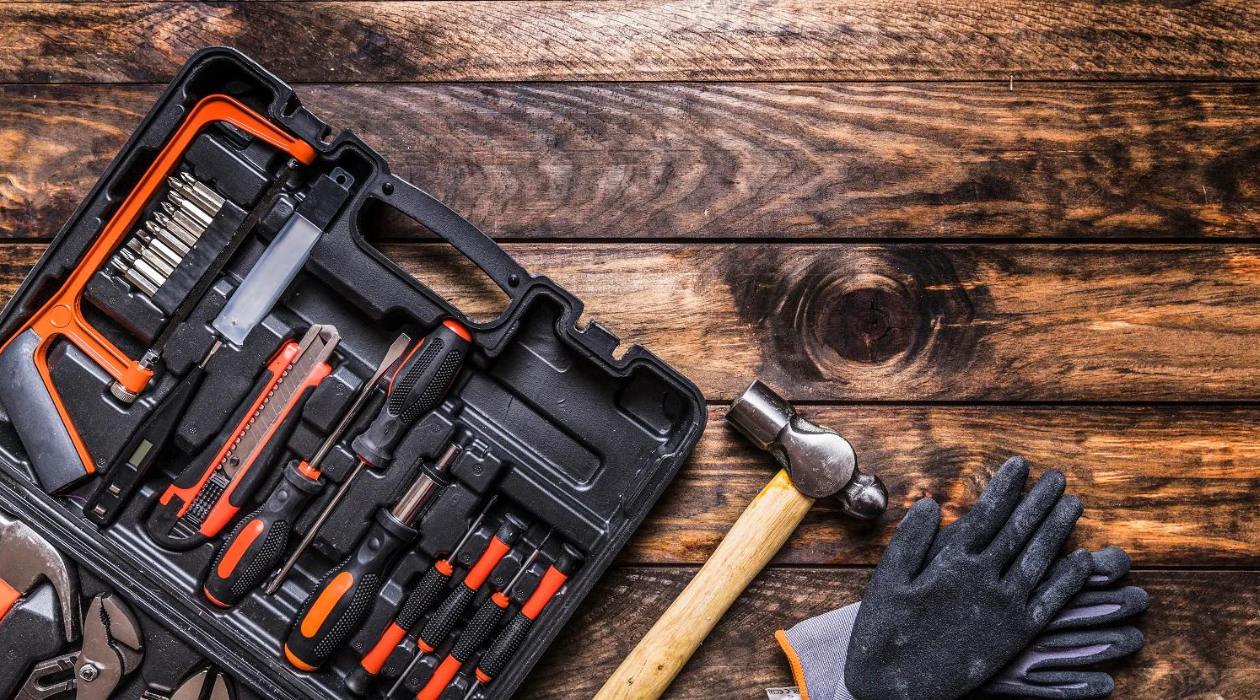

Articles
How Do You Store Hand Tools
Modified: January 8, 2024
Discover effective and practical ways to store your hand tools with our informative articles. Simplify your workspace and keep your tools organized for easy access.
(Many of the links in this article redirect to a specific reviewed product. Your purchase of these products through affiliate links helps to generate commission for Storables.com, at no extra cost. Learn more)
Introduction
Hand tools are essential for countless tasks and projects, whether you’re a DIY enthusiast or a professional tradesperson. From screwdrivers and wrenches to hammers and pliers, these tools are the backbone of any toolkit. However, keeping them organized and easily accessible can be a challenge without proper storage solutions. In this article, we’ll explore the importance of storing hand tools correctly and provide you with some practical tips and ideas to keep your tools in top-notch condition.
Proper storage of hand tools is crucial for several reasons. Firstly, it ensures their longevity and durability. Taking the time to properly store your tools can prevent rust, corrosion, and damage that can occur from improper handling or exposure to moisture and extreme temperatures. Additionally, well-organized tools are easier to locate, saving you time and frustration when you need to quickly grab a specific tool.
Another reason why proper storage of hand tools is important is for the safety of yourself and others. Storing tools haphazardly or leaving them lying around can pose a potential danger, especially if there are children or pets in the vicinity. By implementing appropriate storage solutions, you can minimize the risk of accidental injuries.
When it comes to storing hand tools, there are several factors to consider. One of the main considerations is the space available to you. Whether you have a dedicated workshop, a garage, or a small tool closet, it’s important to optimize the available space and choose storage options that fit your needs.
Another important factor is accessibility. You want your tools to be within easy reach whenever you need them. This means finding a storage system that allows you to quickly locate and retrieve the tools you need, without having to rummage through a messy pile or search through multiple containers.
Lastly, portability is also a factor to consider. If you often work on different job sites or need to transport your tools frequently, you’ll want storage solutions that are portable and easy to carry. This ensures that your tools stay organized and protected even while on the move.
In the next sections, we will explore various types of storage options that can help you keep your hand tools organized and secure. From wall-mounted systems to toolboxes and rolling carts, there are plenty of choices to suit your specific needs. So, let’s dive in and discover the best ways to store your valuable hand tools!
Key Takeaways:
- Proper storage of hand tools is crucial for longevity, efficiency, and safety. Choose the right storage solution based on space, accessibility, and protection to ensure your tools are organized and well-maintained.
- Implementing effective organization and maintenance practices for hand tool storage enhances productivity, safety, and tool longevity. Regularly assess, declutter, and organize your tools to create a well-structured and efficient workspace.
Read more: How Do You Split A Log With Hand Tools
Importance of Proper Storage for Hand Tools
Proper storage for hand tools is often overlooked, but it plays a crucial role in maintaining the integrity and performance of these essential tools. Here are some key reasons why investing in proper storage is important:
- Prolongs Tool Lifespan: Hand tools, when not stored properly, are prone to damage and wear. Exposure to moisture, extreme temperatures, and other environmental factors can cause corrosion, rust, and deterioration. By using appropriate storage solutions, you can prevent these issues and prolong the lifespan of your tools.
- Reduces Risk of Accidents: Storing hand tools in an organized and secure manner reduces the risk of accidents. When tools are scattered or left lying around, they can pose tripping hazards or cause injuries when accidentally stepped on. Proper storage ensures that tools are safely kept out of the way and minimizes the likelihood of accidents.
- Saves Time and Improves Efficiency: Having a well-organized storage system for your hand tools saves you valuable time and improves overall efficiency. You no longer have to waste time searching for a specific tool or going through a cluttered toolbox. With proper storage, tools are easily accessible and can be located quickly, allowing you to focus on the task at hand.
- Preserves Tool Performance: Hand tools that are stored in an appropriate manner retain their performance and functionality. When tools are exposed to harsh conditions or mishandled during storage, they can become misaligned, dull, or damaged, affecting their performance. By providing them with a dedicated storage space, you can prevent such issues and ensure optimal tool performance.
- Enhances Organization and Productivity: An organized workspace contributes to improved productivity. When your hand tools are neatly arranged and properly stored, you can easily locate and retrieve them whenever needed. This eliminates frustration and streamlines your workflow, resulting in increased productivity and efficiency.
- Protects Investment: Hand tools can be a significant investment, especially if you opt for high-quality, durable tools. Proper storage protects your investment by keeping the tools in pristine condition. When your tools are well-maintained and protected from damage, you can rely on them for longer and avoid the need for frequent replacements or repairs.
Considering the numerous benefits of proper storage for hand tools, it is clear that implementing effective storage solutions is not just a matter of convenience, but also a smart investment. Whether you are a professional tradesperson or a DIY enthusiast, taking the time to organize and store your hand tools properly will pay off in the long run. In the next sections, we will explore some common types of hand tool storage options and provide practical tips to help you keep your tools organized and in optimal condition.
Factors to Consider When Storing Hand Tools
When it comes to storing hand tools, there are a few important factors to consider to ensure that your storage solution meets your specific needs. Let’s take a closer look at these factors:
- Space: Assess the available space in your workshop, garage, or storage area. Consider the size and quantity of your hand tools and choose a storage option that maximizes the use of the available space. Wall-mounted storage systems, tool chests, and rolling carts are great options for compact spaces, while larger workshops can accommodate pegboard or slatwall storage systems.
- Accessibility: Easy access to your tools is essential for efficiency. Consider a storage solution that allows you to quickly locate and retrieve your tools without hassle. Wall-mounted systems with designated hooks or holders, clear drawer organizers, or tool chests with multiple compartments are great options for easy accessibility.
- Portability: If you often work on different job sites or need to transport your tools, portability becomes a key factor. Look for storage solutions that are lightweight, compact, and feature handles or wheels for easy transportation. Rolling tool carts or tool bags with reinforced handles are excellent choices for portable storage.
- Protection: Protecting your tools from damage is crucial for their longevity. Choose storage solutions that provide adequate protection against moisture, dust, and other environmental factors. Look for tool chests or cabinets with sturdy locks, foam inserts to cushion delicate tools, or cases with foam lining for extra protection.
- Organization: A well-organized storage system contributes to a clutter-free workspace. Consider storage solutions that offer ample compartments, drawers, or clear containers to easily categorize and separate your tools. This helps you maintain order and quickly find the tool you need when working on a project.
- Budget: Set a budget for your hand tool storage solution. There are options available at a wide range of price points, so determine what you’re willing to invest based on the size of your tool collection and your specific requirements. It’s important to strike a balance between quality and affordability.
By considering these factors, you can choose a hand tool storage solution that fits your space, requirements, and budget. Remember that the ideal storage solution may vary depending on the size and type of tools you have, the available space, and your personal preferences. In the following sections, we will explore common types of hand tool storage options and provide insights into their advantages and implementation.
Common Types of Hand Tool Storage Options
When it comes to storing hand tools, there are various storage options available to suit different needs and preferences. Let’s explore some of the most common types of hand tool storage solutions:
- Wall-Mounted Storage Systems: Wall-mounted storage systems are an excellent choice for maximizing vertical space in your workshop or garage. They typically feature hooks, pegboards, or slatwalls that allow you to hang your tools. This type of storage keeps your tools easily accessible and visible, making it simple to locate and retrieve them as needed.
- Toolbox and Tool Chest Storage Solutions: Toolboxes and tool chests are portable storage solutions that provide secure and organized storage for your hand tools. They come in various sizes and designs, with multiple compartments and drawers for easy organization. Tool chests often feature built-in locks for added security. These storage options are ideal for those who need to transport their tools or work on different job sites.
- Pegboard and Slatwall Storage Systems: Pegboard and slatwall systems are versatile and customizable storage solutions. They consist of panels with evenly spaced holes or slots that allow you to attach hooks, shelves, and other accessories. This type of storage system provides flexibility, as you can easily rearrange and reposition the hooks and other accessories to accommodate different hand tools.
- Drawer Organizers and Foam Inserts: Drawer organizers and foam inserts are great for keeping your hand tools neatly organized in drawers. These inserts are often made of durable foam that can be customized to fit your specific tools. By placing the tools in designated cutouts, you can prevent them from sliding around and protect them from scratching or damaging one another.
- Magnetic Tool Holders: Magnetic tool holders are an efficient storage solution that keeps your tools securely in place. These holders consist of strong magnets mounted on a wall, pegboard, or other surfaces. By attaching your metal hand tools to the magnets, you can keep them organized, visible, and easily accessible.
- Rolling Tool Carts and Cabinets: Rolling tool carts or cabinets provide a portable and organized storage solution for hand tools. These units typically feature multiple drawers and compartments, allowing for easy organization and access to your tools. The wheels on the cart or cabinet make it convenient to move around your workspace or transport your tools to different locations.
Each of these storage options has its own advantages, so consider your specific needs, available space, and budget when choosing the most suitable solution for your hand tools. You can also combine different storage options to create a customized system that works best for your workspace and tool collection. In the following sections, we will delve deeper into the features and benefits of each of these storage options.
Wall-Mounted Storage Systems
Wall-mounted storage systems offer a practical and space-saving solution for organizing and storing hand tools in your workshop or garage. These systems typically consist of hooks, pegboards, slatwalls, or a combination of these elements. Let’s take a closer look at the advantages and implementation of wall-mounted storage systems:
Advantages of Wall-Mounted Storage Systems:
- Maximize Vertical Space: Wall-mounted storage systems effectively utilize vertical wall space, freeing up valuable floor space in your workspace. This is especially beneficial in smaller areas where space optimization is crucial.
- Ease of Accessibility: With tools displayed on hooks or hung on pegboards or slatwalls, wall-mounted storage systems provide easy and quick access to your tools. You can easily see what tools you have and pick the one you need without rummaging through drawers or cluttered toolboxes.
- Customizable and Adjustable: These systems are highly customizable and adaptable to your specific needs. You can arrange the hooks or accessories to accommodate different types and sizes of tools. As your tool collection evolves, you can easily reposition or add hooks to accommodate new additions.
- Visibility and Organization: Wall-mounted systems keep your tools visible and organized, making it easy to locate and retrieve the tools you need. This eliminates the frustration of searching through a messy toolbox or drawer.
- Flexibility: Wall-mounted storage systems can easily evolve with your changing needs. You can swap out hooks, add accessories, or rearrange the layout as your tool collection expands or changes over time.
Implementing Wall-Mounted Storage Systems:
- Pegboards: Pegboards are versatile and widely used in wall-mounted storage systems. Attach a pegboard to the wall using screws or wall anchors, and then insert hooks or hangers into the holes as needed. Hang your hand tools by placing them on the hooks. Pegboards allow for easy customization and repositioning of hooks, giving you the freedom to create an organized display of your tools.
- Slatwalls: Slatwalls feature horizontal grooves or slots that accommodate various accessories such as hooks, shelves, and baskets. Mount slatwall panels on the wall using screws or brackets, and attach the accessories to the slots. Slatwalls offer more flexibility than pegboards, allowing for easy adjustment and rearrangement of the accessories to accommodate different tools.
- Combination Systems: Some wall-mounted storage systems combine both pegboards and slatwalls, allowing you to enjoy the benefits of both. These systems often feature interchangeable panels, giving you the freedom to switch between pegboards and slatwalls as your storage needs evolve.
When implementing a wall-mounted storage system, consider the layout and available wall space in your workshop or garage. Optimize the arrangement of the hooks, pegboards, or slatwall panels to create a well-organized display of your hand tools. Group similar tools together for easier identification and consider labeling or color-coding the hooks or hangers to further enhance organization.
Overall, wall-mounted storage systems offer a practical and efficient way to keep your hand tools organized, easily accessible, and visible. By utilizing vertical wall space, you can maximize your storage capacity and create a clean and functional workspace.
Read more: How Do You Clean Rusty Hand Tools
Toolbox and Tool Chest Storage Solutions
Toolboxes and tool chests are versatile and portable storage solutions that provide a secure and organized way to store hand tools. These storage options come in various sizes and designs, offering compartments, drawers, and other features to accommodate different types and sizes of tools. Let’s explore the advantages and implementation of toolbox and tool chest storage solutions:
Advantages of Toolbox and Tool Chest Storage Solutions:
- Portability: One of the key advantages of toolbox and tool chest storage solutions is their portability. These storage options often feature handles or wheels, allowing you to easily transport your tools to different job sites or workspaces. This makes them ideal for tradespeople and DIY enthusiasts who need to carry their tools with them.
- Secure Storage: Toolbox and tool chest storage solutions provide a secure way to store your hand tools. Many toolboxes and tool chests come with built-in locks or the option to add padlocks, ensuring that your valuable tools are protected from theft and unauthorized access.
- Organization and Accessibility: These storage options offer compartments, drawers, and trays to help you organize your tools efficiently. You can categorize your tools and store them in designated spaces, making it easy to locate and retrieve the tools you need promptly. Some toolboxes even have clear lids or transparent compartments, allowing for quick visual identification of tools.
- Durability: Toolboxes and tool chests are designed to withstand rough handling and harsh environments. They are typically made from durable materials such as metal, reinforced plastic, or heavy-duty polypropylene, ensuring the protection of your tools even in demanding work conditions.
- Variety of Sizes and Designs: Toolbox and tool chest storage solutions come in a range of sizes and designs to suit different needs and tool collections. Whether you have a small collection of essential tools or a comprehensive toolkit, you can find a toolbox or tool chest that fits your specific requirements.
Implementing Toolbox and Tool Chest Storage Solutions:
- Choose the Right Size: Consider the size of your hand tool collection and select a toolbox or tool chest that can comfortably accommodate all your tools. It’s better to choose a slightly larger option to allow for growth in your collection in the future.
- Consider Compartments and Drawers: Look for toolboxes or tool chests with compartments and drawers to help you organize your tools effectively. Compartmentalizing your tools based on their types or functions makes it easier to locate and retrieve them when needed.
- Decide on the Material: Toolbox and tool chest storage solutions come in various materials, each with its own advantages. Metal options offer durability and strength, while plastic options are lightweight and resistant to rust and corrosion. Choose the material that best suits your needs and preferences.
- Consider Mobility: If you require frequent transportation of your tools, opt for a toolbox or tool chest with wheels or a comfortable handle. This will make it easier to move your tools from one location to another without strain or hassle.
- Security Features: Look for toolboxes or tool chests with built-in locking mechanisms or the option to add padlocks. This will ensure the security of your tools, especially when they need to be left unattended in a shared workspace or construction site.
Toolboxes and tool chests are practical and reliable storage solutions that offer portability, organization, and security for your hand tools. By selecting the right size, considering compartments and drawers, and taking into account the material and security features, you can find a toolbox or tool chest that meets your specific needs and keeps your hand tools safe and easily accessible.
To store hand tools, consider using a pegboard or wall-mounted tool rack to keep them organized and easily accessible. This will help prevent damage and make it easier to find the right tool when needed.
Pegboard and Slatwall Storage Systems
Pegboard and slatwall storage systems are versatile and customizable options for organizing and storing hand tools. These systems utilize wall space by incorporating panels with evenly spaced holes (pegboards) or horizontal grooves (slatwalls) that allow for the attachment of various hooks, shelves, and other accessories. Let’s explore the advantages and implementation of pegboard and slatwall storage systems:
Advantages of Pegboard and Slatwall Storage Systems:
- Flexibility and Customization: Pegboard and slatwall systems offer high levels of flexibility and customization. You have the freedom to arrange and rearrange hooks, shelves, and other accessories to accommodate different types and sizes of hand tools. This adaptability makes it easy to optimize your storage space and adjust as your tool collection evolves.
- Maximize Wall Space: Pegboard and slatwall systems allow you to efficiently utilize vertical wall space, freeing up floor space in your workshop or garage. By mounting these panels on the wall, you can keep your tools organized and easily accessible while maximizing the use of your available space.
- Ease of Accessibility: With your tools displayed on pegboards or slatwalls, you can easily spot the tool you need and retrieve it quickly. The open design of these systems eliminates the need to rummage through drawers or search through cluttered toolboxes, saving you time and effort.
- Visible Organization: Pegboards and slatwalls provide a visual organization of your hand tools. By hanging your tools on hooks or placing them on shelves, you can easily see and identify each tool, making it convenient to choose the right tool for the task at hand.
- Expandable and Modular: These storage systems allow for easy expansion as your tool collection grows. You can add more panels, hooks, shelves, or other accessories to accommodate new tools or reconfigure the layout to suit your changing needs. This adaptability makes pegboard and slatwall systems a long-term storage solution.
Implementing Pegboard and Slatwall Storage Systems:
- Prepare and Mount the Panels: Measure and prepare the wall where you plan to install the pegboard or slatwall system. Mount the panels securely using proper mounting hardware, such as screws or brackets, to ensure stability and durability.
- Select and Arrange Accessories: Choose hooks, shelves, baskets, and other accessories that are compatible with your chosen system. Arrange them on the pegboard or within the slatwall grooves based on your tool organization preferences. Consider grouping similar tools together or arranging them based on frequency of use for efficient retrieval.
- Securely Attach Tools: Hang your hand tools on the hooks provided or place them on the shelves or baskets. Make sure to secure the tools properly to prevent them from falling or becoming dislodged. You can add additional security measures, such as zip ties or clips, to keep your tools securely in place.
- Label or Color-Code: To enhance organization and ease of identification, consider labeling or color-coding the hooks or shelves that hold specific tools. This way, you and anyone else using the storage system can quickly locate the desired tool, improving overall efficiency.
- Regular Maintenance: Regularly inspect and maintain your pegboard or slatwall storage system. Ensure that hooks and accessories are secure and in good condition. Clean the panels to remove any dust or debris that may accumulate over time.
Pegboard and slatwall storage systems offer a versatile and customizable solution for organizing and storing hand tools. By utilizing vertical wall space, these systems provide flexibility, ease of accessibility, and visible organization. With proper implementation and maintenance, pegboard and slatwall storage systems can help you create an efficient and well-organized workspace.
Drawer Organizers and Foam Inserts
Drawer organizers and foam inserts are effective storage solutions for keeping hand tools neatly organized and protected within drawers. These organizers provide compartments and designated spaces for different tools, while foam inserts offer cushioning and security. Let’s explore the advantages and implementation of drawer organizers and foam inserts:
Advantages of Drawer Organizers and Foam Inserts:
- Efficient Tool Organization: Drawer organizers provide separate compartments and divisions, allowing you to categorize and store hand tools in an organized manner. You can assign specific spaces for different types of tools, making it easy to find and retrieve them when needed.
- Protection and Cushioning: Foam inserts offer a layer of protection for delicate and precision hand tools. The foam contours to the shape of the tools, providing cushioning and preventing them from knocking against each other or the sides of the drawer. This helps to prevent damage or wear during storage.
- Prevention of Sliding and Movement: Foam inserts help keep tools firmly in place within the drawer, minimizing the risk of them sliding or moving around when the drawer is opened or closed. This prevents potential damage to the tools and maintains their organization.
- Easy Identification: Drawer organizers and foam inserts make it easy to identify and locate specific tools at a glance. By assigning each tool its own designated spot, you can quickly identify if any tool is missing or needs to be returned to its proper place.
- Space Optimization: Drawer organizers and foam inserts allow you to make the most of the available space within a drawer. By utilizing the vertical and horizontal dimensions of the drawer efficiently, you can store a larger number of tools in a compact and organized manner.
Implementing Drawer Organizers and Foam Inserts:
- Assess Drawer Size and Tool Collection: Measure the dimensions of the drawer to ensure that the organizer or foam insert fits properly. Consider the size and quantity of your hand tools to choose a suitable organizer or foam insert that has the necessary compartments and divisions.
- Select the Right Organizer or Foam Insert: There are various options available for drawer organizers, including adjustable dividers, compartmentalized trays, and modular systems. Foam inserts are typically customizable, allowing you to create cutouts that match the shapes of your tools. Choose the option that best meets your needs and offers the desired level of organization and protection.
- Organize Tools in Compartments: Place each tool in its designated compartment within the drawer organizer or foam insert. Depending on the organizer or foam insert design, you may arrange the tools vertically or horizontally. Group similar tools together and consider the frequency of use or specific tool sets for efficient organization.
- Regular Maintenance: Periodically assess and reorganize your drawer organizers and foam inserts to ensure that tools are still in their designated spaces and everything remains well-organized. Replace or adjust the foam inserts as needed to accommodate new tools or changes in your tool collection. Clean the organizers and foam inserts as necessary to keep them in good condition.
Drawer organizers and foam inserts provide an efficient and protective storage solution for your hand tools. By keeping tools organized, cushioned, and easily accessible within drawers, you can optimize space utilization, protect your tools from damage, and maintain a tidy workspace.
Magnetic Tool Holders
Magnetic tool holders are a versatile and space-saving storage solution for hand tools. These holders consist of strong magnets that securely hold your tools in place, allowing for easy access and organization. Let’s explore the advantages and implementation of magnetic tool holders:
Advantages of Magnetic Tool Holders:
- Secure and Stable Storage: Magnetic tool holders provide a secure and stable storage solution for hand tools. The strong magnets securely hold the tools in place, preventing them from shifting or falling off the holder. This ensures that your tools are organized and readily available when you need them.
- Space-Saving Design: Magnetic tool holders utilize vertical wall space, freeing up valuable drawer or countertop space. By mounting the holders on the wall, you can keep your tools neatly organized and easily accessible without taking up additional workspace.
- Ease of Accessibility: With magnetic tool holders, your tools are displayed in a clear and visible manner. This makes it easy to quickly locate and retrieve the specific tool you need, without having to search through drawers or toolboxes.
- Flexible Arrangement: Magnetic tool holders can be arranged and installed according to your preference. You can choose to mount them individually or in a row, allowing you to customize the arrangement based on the available wall space and the size and quantity of your tools.
- Easy Installation: Installing magnetic tool holders is relatively simple. Most magnetic tool holders come with mounting hardware, such as screws, allowing for easy installation onto walls or other solid surfaces. Ensure that the holders are securely fastened to provide maximum support and stability.
- Compatibility with Various Tools: Magnetic tool holders are compatible with a wide range of hand tools, including wrenches, screwdrivers, pliers, and more. The magnetic force securely holds metal tools of various sizes and shapes, offering a versatile storage solution for your tool collection.
Implementing Magnetic Tool Holders:
- Assess Wall Space: Evaluate and measure the available wall space in your workshop or garage. Determine the appropriate location for installing the magnetic tool holders, considering easy accessibility and visibility.
- Mount the Magnetic Tool Holders: Using the provided mounting hardware, securely attach the magnetic tool holders to the wall. Ensure that the holders are properly aligned and evenly spaced. Use a level or measuring tape for precise positioning.
- Arrange and Store Tools: Place your hand tools onto the magnetic tool holders, ensuring that they are securely held in place by the magnets. Arrange the tools based on your organizational preference, grouping similar tools together.
- Consider Labeling: To further enhance organization, consider labeling or marking the storage area for each tool. This makes it quick and easy to identify the tools and ensures that they are returned to their proper positions after use.
- Regular Maintenance: Periodically check the magnetic tool holders to ensure that the magnets are still securely holding the tools in place. Clean the holders and remove any debris or dust that may interfere with the magnetic force. This will help maintain the effectiveness and longevity of the magnetic storage system.
Magnetic tool holders offer a practical and efficient solution for storing hand tools. By utilizing magnetic force and vertical wall space, these holders provide secure and accessible storage, optimizing organization and saving valuable workspace. Implementing magnetic tool holders in your workshop or garage can enhance efficiency and convenience, making your tools easily accessible for your next project.
Rolling Tool Carts and Cabinets
Rolling tool carts and cabinets are practical and portable storage solutions for hand tools. These versatile options provide secure storage compartments, drawers, and shelves, while offering the convenience of mobility. Let’s explore the advantages and implementation of rolling tool carts and cabinets:
Advantages of Rolling Tool Carts and Cabinets:
- Portability: One of the key advantages of rolling tool carts and cabinets is their portability. Equipped with wheels and a handle, these storage solutions can be easily maneuvered around your workspace or transported to different job sites. This allows for convenient access to your tools wherever you need them.
- Ample Storage Space: Rolling tool carts and cabinets provide generous storage space for hand tools of various sizes and types. With multiple compartments, drawers, and shelves, you can organize your tools efficiently and keep them readily accessible.
- Secure Storage: Tool carts and cabinets typically feature locking mechanisms, ensuring the security of your hand tools. When not in use, you can safely lock the cart or cabinet to protect your tools from theft or unauthorized access.
- Ease of Organization: With dedicated compartments, drawers, and shelves, rolling tool carts and cabinets allow you to organize your tools based on function, size, or frequency of use. This makes it easy to find and retrieve the specific tool you need, reducing downtime and improving efficiency.
- Workspace Expansion: Rolling tool carts and cabinets often come with a flat top surface that can serve as an additional workspace. This provides extra room for working on projects or temporarily placing tools and materials, maximizing the functionality of your storage solution.
- Durability and Protection: Rolling tool carts and cabinets are built to withstand heavy use and withstand tough working conditions. They are constructed from sturdy materials, such as metal or heavy-duty polypropylene, ensuring the long-term durability and protection of your tools.
Implementing Rolling Tool Carts and Cabinets:
- Assess Your Tool Collection: Evaluate the size and quantity of your hand tools to determine the appropriate size and capacity of the rolling tool cart or cabinet. Consider whether you require more compartments, drawers, or shelves based on the diversity and number of tools you need to store.
- Select a Suitable Model: Research and select a rolling tool cart or cabinet that meets your storage needs and preferences. Consider factors such as size, weight capacity, locking mechanisms, and the number and configuration of compartments and drawers.
- Organize Tools: Organize your tools within the compartments, drawers, and shelves of the rolling tool cart or cabinet. Group similar tools together and allocate specific spaces for tools of different sizes and functions. This will enhance organization and facilitate easy access to your tools.
- Utilize Flat Workspace: Take advantage of the flat top surface of the rolling tool cart or cabinet by using it as additional workspace. This can be particularly useful when you need to work on projects that require a stable and elevated surface.
- Ensure Mobility: Ensure that the wheels of the rolling tool cart or cabinet are secure and in good working condition. Test the cart or cabinet’s maneuverability to ensure smooth rolling and easy mobility around your workspace.
- Lock for Security: Take advantage of the locking mechanisms provided by the rolling tool cart or cabinet. When not in use, lock the cart or cabinet to prevent unauthorized access and protect your valuable tools.
Rolling tool carts and cabinets offer a convenient and efficient storage solution for hand tools. With their portability, ample storage space, and secure locking mechanisms, these storage options allow you to keep your tools organized, protected, and easily accessible. Implementing a rolling tool cart or cabinet in your workshop or job site will enhance productivity, mobility, and organization for all your projects.
Tips for Organizing and Maintaining Hand Tool Storage
Effective organization and maintenance of hand tool storage are essential for ensuring optimal functionality and longevity. Here are some tips to help you keep your hand tool storage system organized and well-maintained:
- Categorize Tools: Group your hand tools based on their type or function. This could include categorizing them into categories such as screwdrivers, wrenches, pliers, and hammers. Keeping similar tools together makes it easier to locate and retrieve the tool you need.
- Label or Color-Code: Consider labeling or color-coding your tool storage areas to further enhance organization. Whether using labels, tags, or colored tape, clear identification saves time and minimizes the chances of misplacing or losing tools.
- Regularly Declutter: Periodically evaluate your tool collection and remove any tools that are no longer needed or in working condition. By decluttering regularly, you can maintain an organized and efficient storage system, making it easier to find and access the tools you use most frequently.
- Implement a Tool Return System: Establish a designated area or system for returning tools after use. Whether it’s a specific drawer, shelf, or pegboard hook, having a consistent place for tools to be stored ensures they are easily accessible and reduces the chances of misplacing or leaving tools out.
- Maintain Cleanliness: Keep your tool storage area clean and free from dust and debris. Regularly wipe down shelves, drawers, and other storage compartments to prevent the buildup of dirt or rust that could potentially damage your tools.
- Inspect Tools Regularly: Take the time to inspect your tools for any signs of damage or wear. Check for loose handles, rust, or dullness that may affect their performance. Replace or repair any damaged tools to ensure they remain in good working condition.
- Use Protective Coatings or Storage: Consider using protective coatings or storage solutions for your tools. This may include applying a rust-preventative spray or using tool rolls, cases, or pouches to protect tools from moisture, dust, and other damaging elements.
- Keep Safety in Mind: Ensure that your storage system takes into account safety considerations. Store sharp or potentially hazardous tools in a way that minimizes the risk of accidental injury, especially if there are children or pets in the vicinity.
- Regularly Update and Reorganize: As your tool collection grows or changes, periodically update and reorganize your storage system to accommodate new additions. Evaluate your current organization system and make adjustments as needed to enhance efficiency and accessibility.
- Invest in Quality Storage Solutions: Consider investing in high-quality storage solutions that are designed specifically for hand tools. Durable toolboxes, wall-mounted systems, or rolling carts made from sturdy materials will provide long-lasting protection and organization for your tools.
By following these tips for organizing and maintaining your hand tool storage, you can create a well-structured and efficient workspace. Keeping your tools organized and properly maintained ensures easy accessibility, extends their lifespan, and maximizes your productivity while working on various projects.
Conclusion
Proper storage of hand tools is not only important for their longevity and protection but also for the efficiency and safety of your work. By implementing effective storage solutions, you can ensure that your hand tools are organized, easily accessible, and well-maintained. Throughout this article, we have explored various types of hand tool storage options, including wall-mounted systems, toolbox and tool chest solutions, pegboard and slatwall systems, drawer organizers, foam inserts, magnetic tool holders, and rolling tool carts and cabinets.
Each of these storage solutions offers unique advantages and can be tailored to different workspaces and tool collections. Whether you have a small workshop, a garage, or the need for portable solutions on job sites, there is a storage option to suit your needs.
Furthermore, we discussed important factors to consider when storing hand tools, such as available space, accessibility, portability, protection, organization, and budget. By taking these factors into account, you can choose the most suitable storage solution for your tools.
In conclusion, investing in proper storage for hand tools is crucial to maintain their lifespan, reduce the risk of accidents, save time, enhance organization, and protect your valuable investment. Whether you opt for a wall-mounted system, toolbox, pegboard, drawer organizer, magnetic tool holder, or rolling cart, the key is to find a solution that fits your specific needs and preferences.
Remember to regularly maintain and inspect your tools, declutter and organize your storage system, and prioritize safety in your workspace. By following these tips, you can ensure that your hand tools are in top condition, easily accessible, and contribute to a productive and successful work environment.
So, take the time to assess your storage needs, choose the appropriate storage solutions, and implement effective organization and maintenance practices. Your hand tools will thank you with enhanced performance and longevity, while enabling you to work efficiently and safely on your projects.
Frequently Asked Questions about How Do You Store Hand Tools
Was this page helpful?
At Storables.com, we guarantee accurate and reliable information. Our content, validated by Expert Board Contributors, is crafted following stringent Editorial Policies. We're committed to providing you with well-researched, expert-backed insights for all your informational needs.
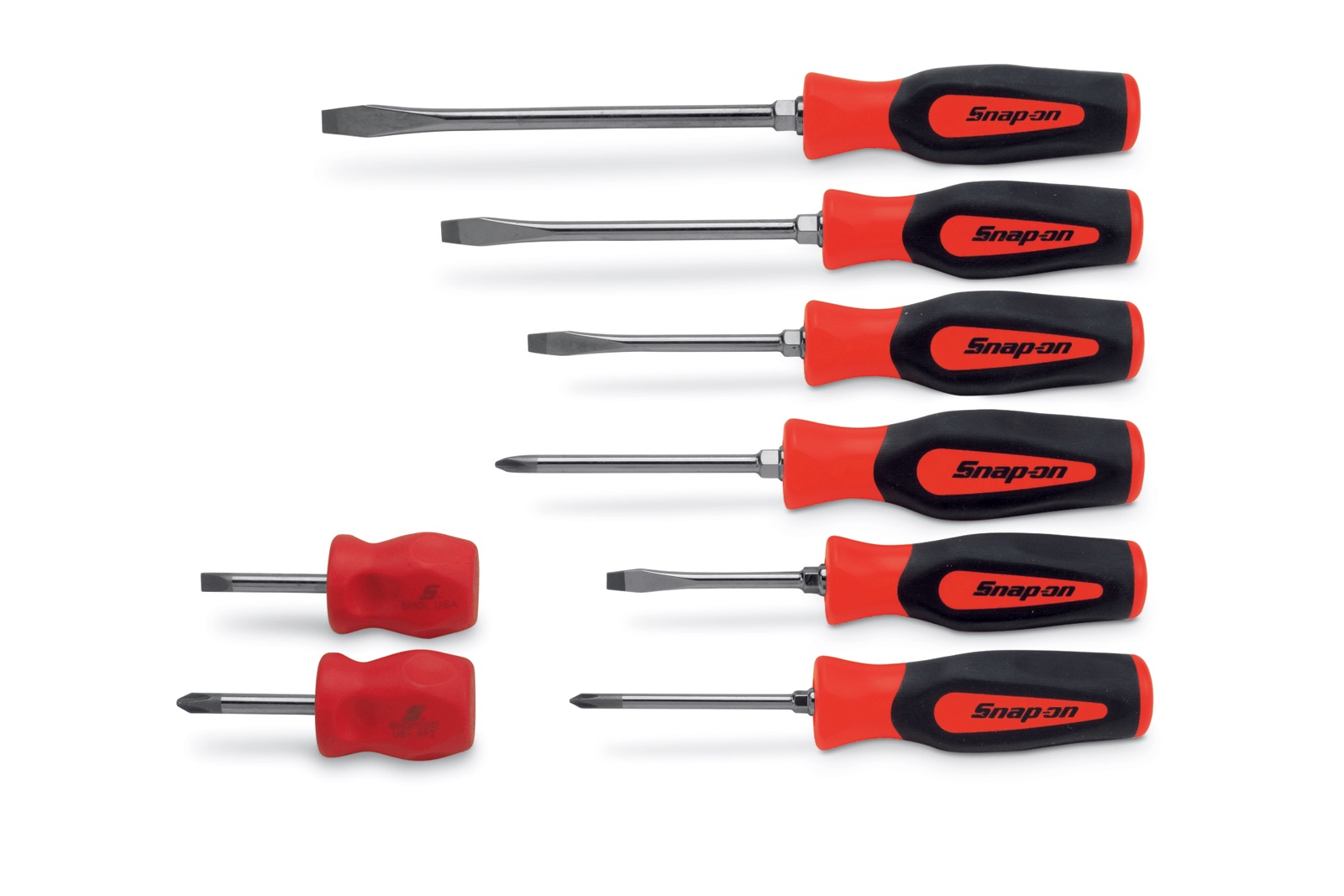
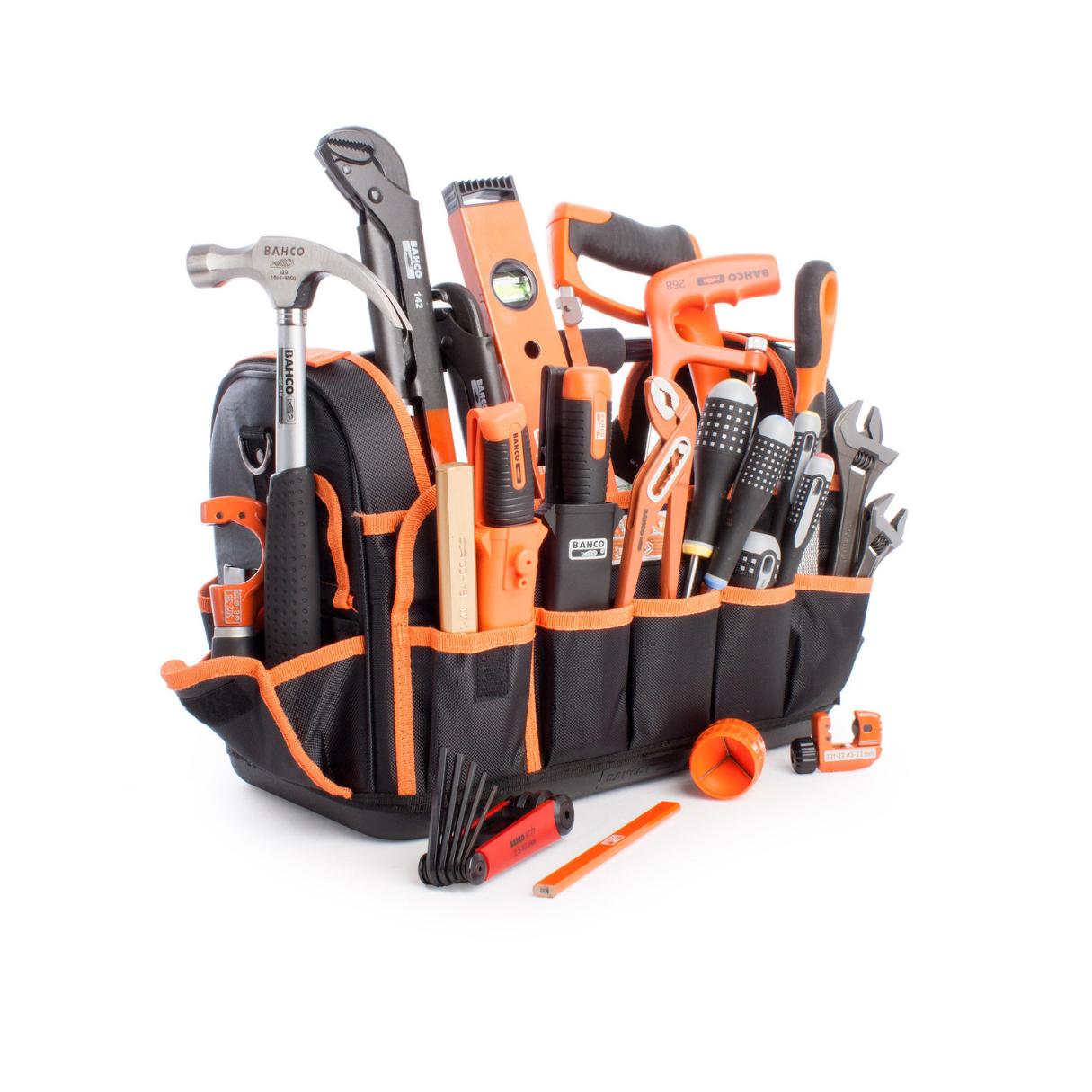
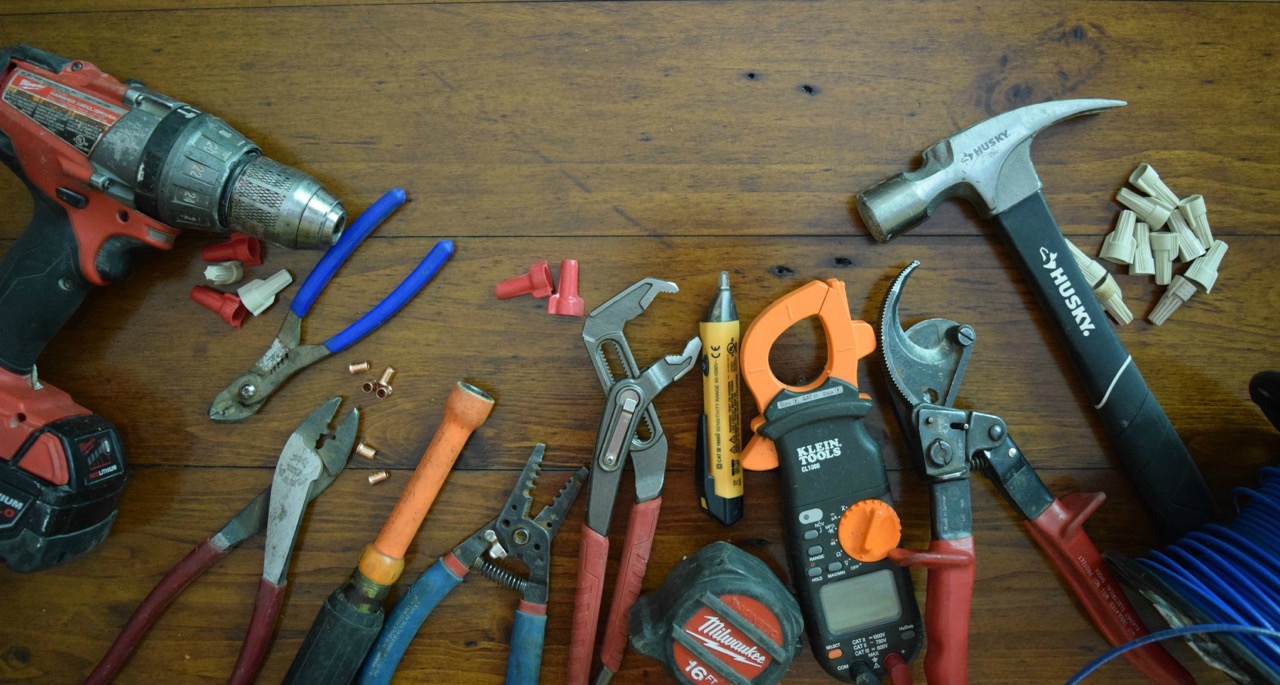


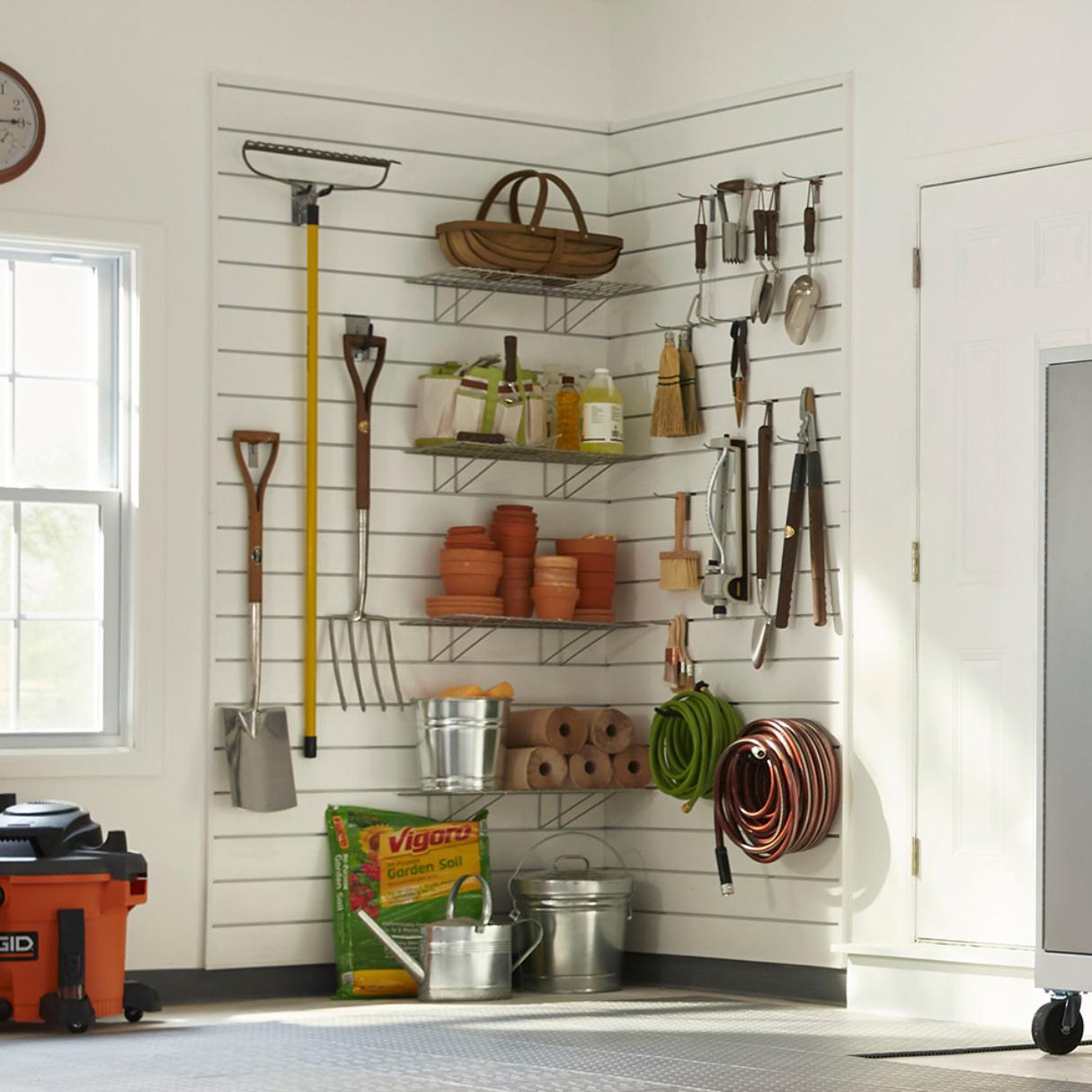

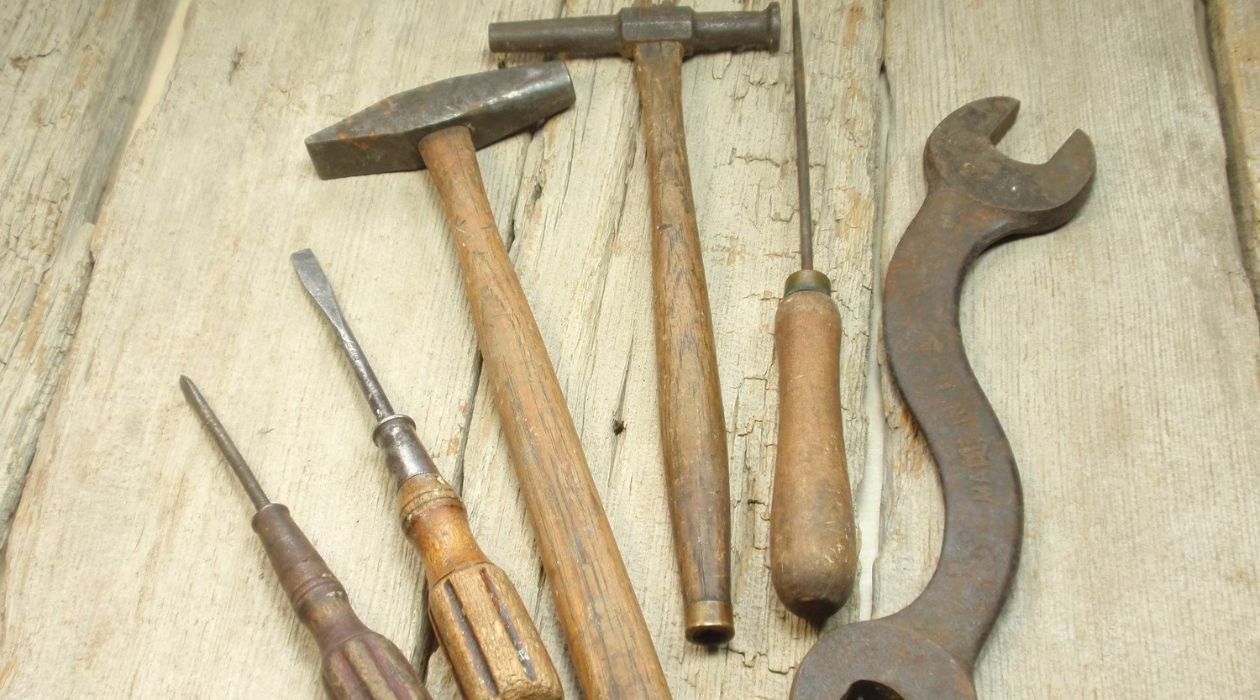
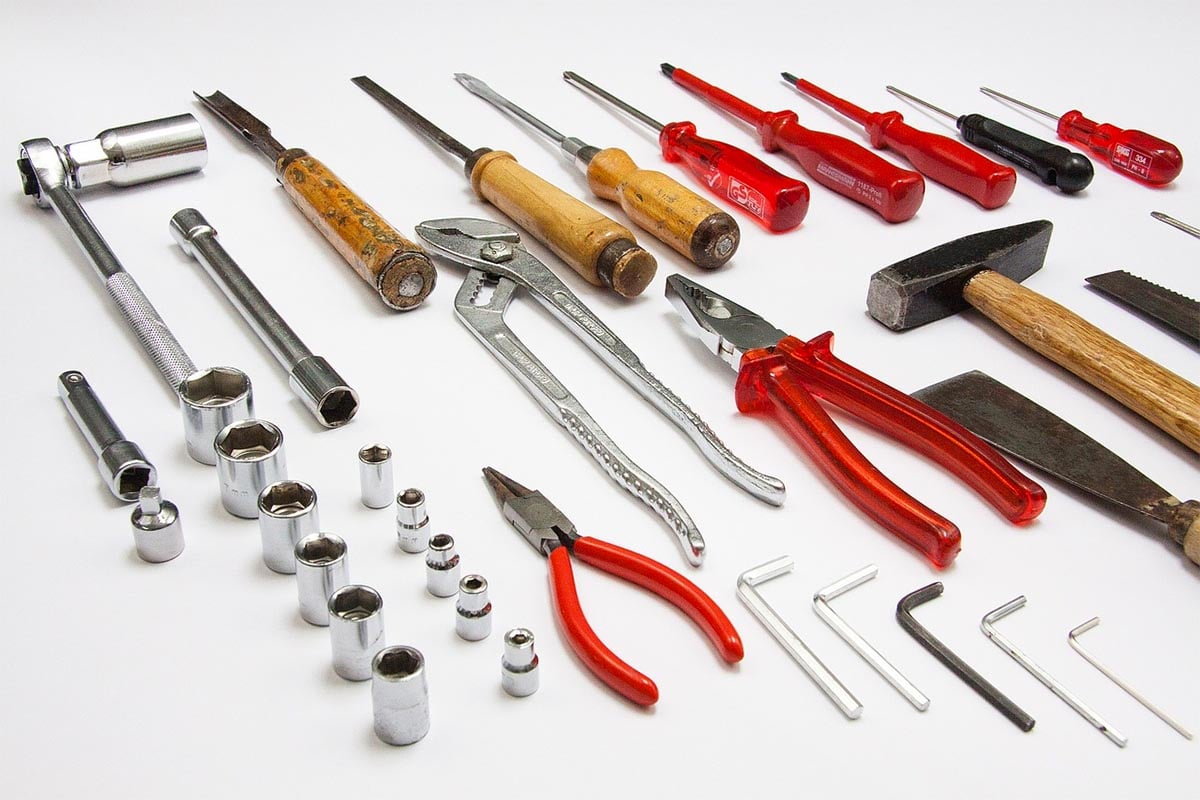

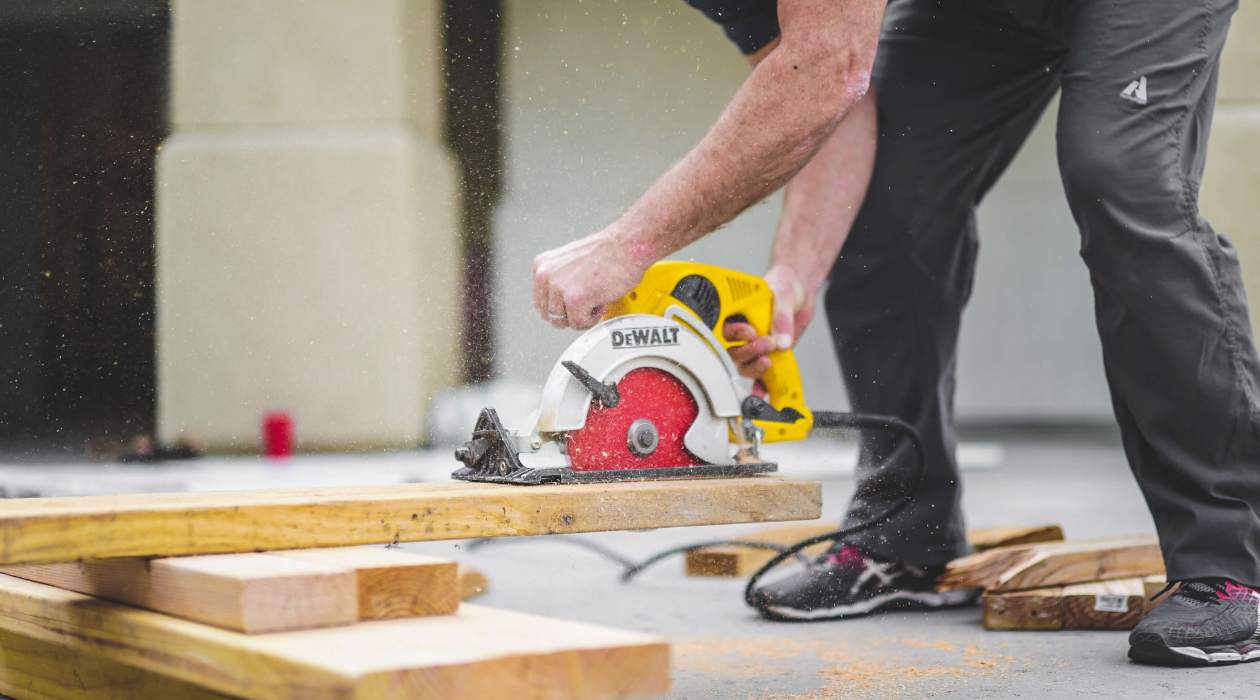



0 thoughts on “How Do You Store Hand Tools”